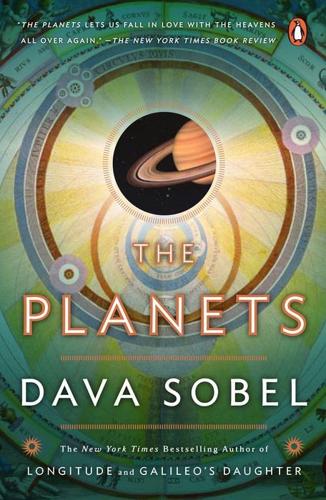
The Planets
by
Dava Sobel
Published 1 Jan 2005
—Diane Ackerman, from The Planets: A Cosmic Pastoral In all the history of mankind, there will be only one generation that will be first to explore the Solar System, one generation for which, in childhood, the planets are distant and indistinct discs moving through the night sky, and for which, in old age, the planets are places, diverse new worlds in the course of exploration. —Carl Sagan, from The Cosmic Connection: An Extraterrestrial Perspective CONTENTS MODEL WORLDS (Overview) GENESIS (The Sun)) MYTHOLOGY (Mercury) BEAUTY (Venus) GEOGRAPHY (Earth) LUNACY (The Moon) SCI-FI (Mars) ASTROLOGY (Jupiter) MUSIC OF THE SPHERES (Saturn) NIGHT AIR (Uranus and Neptune) UFO (Pluto) PLANETEERS (Coda) Acknowledgments Glossary A Note About the Illustrations Details Bibliography Index MODEL WORLDS My planet fetish began, as best I can recall, in third grade, at age eight—right around the time I learned that Earth had siblings in space, just as I had older brothers in high school and college.
…
*Johannes Kepler (1571–1630), court astronomer and astrologer in Prague, first referred to the “Medicean stars” as “Galilean satellites” in 1610. Simon Marius, a contemporary of Galileo and Kepler, gave the moons their enduring individual names by selecting four favored lovers of the mythological Zeus/Jupiter. MUSIC of the SPHERES Between 1914 and 1916, the English composer Gustav Holst created the only known example of a symphonic tribute to the Solar System, his Opus 32, The Planets, Suite for Orchestra. Neither Haydn’s “Mercury” (Symphony no. 43 in E flat major) nor Mozart’s “Jupiter” (no. 41 in C; K. 551) had attempted as much.
…
A natural affinity between music and astronomy has prevailed since at least the sixth century B.C., when the Greek mathematician Pythagoras perceived “geometry in the humming of the strings” and “music in the spacing of the spheres.” Pythagoras believed the cosmic order obeyed the same mathematical rules and proportions as the tones on a musical scale. Plato reprised the idea two centuries later, in The Republic, introducing the memorable phrase “music of the spheres” to describe the melodious perfection of the heavens. Plato spoke also of “celestial harmony” and “the most magnificent choir”—terms that imply the songs of angels, though they referred specifically to the unheard polyphony of the planets in their gyrations. Copernicus cited the “ballet of the planets” when he choreographed his heliocentric universe, and Kepler built on the work of Copernicus by returning repeatedly to the major and minor scales.
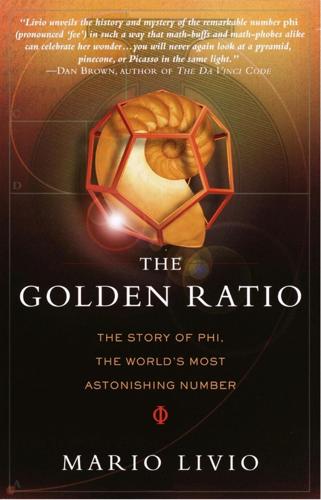
The Golden Ratio: The Story of Phi, the World's Most Astonishing Number
by
Mario Livio
Published 23 Sep 2003
A.D. 232–304), who wrote more than seventy works dealing with history, metaphysics, and literature, also wrote (as a part of his four-volume work History of Philosophy) a brief biography of Pythagoras entitled Life of Pythagoras. In it, Porphyry says about Pythagoras: “He himself could hear the harmony of the Universe, and understood the music of the spheres, and the stars which move in concert with them, and which we cannot hear because of the limitations of our weak nature.” After enumerating more of Pythagoras' exquisite qualities, Porphyry continues: “Pythagoras affirmed that the Nine Muses were constituted by the sounds made by the seven planets, the sphere of the fixed stars, and that which is opposed to our earth, called the ‘counter-earth’ (the latter, according to the Pythagorean theory of the universe, revolved in opposition to Earth, around a central fire).
…
Recall that music and harmony represented to Pythagoras and the Pythagoreans the first evidence that cosmic phenomena could be described by mathematics. Only strings plucked at lengths with ratios corresponding to simple numbers produced consonant tones. A ratio of 2:3 sounded the fifth, 3:4 a fourth, and so on. Similar harmonic spacings of the planets were also thought to produce the “music of the spheres.” Kepler was very familiar with these concepts since he read most of the book by Galileo's father, Vincenzo Galilei, Dialogue Concerning Ancient and Modern Music, although he rejected some of Vincenzo's ideas. Since he also believed that he had a complete model for the Solar System, Kepler was able to develop little “tunes” for the different planets (Figure 65).
…
GOLDEN MUSIC Every string quartet and symphony orchestra today still uses Pythagoras' discovery of whole-number relationships among the different musical tones. Furthermore, in the ancient Greek curriculum and up to medieval times, music was considered a part of mathematics, and musicians concentrated their efforts on the understanding of the mathematical basis of tones. The concept of the “music of the spheres” represented a glorious synthesis of music and mathematics, and in the imaginations of philosophers and musicians, it wove the entire cosmos into one grand design that could be perceived only by the gifted few. In the words of the great Roman orator and philosopher Cicero (ca. 106–43 B.C.): “The ears of mortals are filled with this sound, but they are unable to hear it.… You might as well try to stare directly at the Sun, whose rays are much too strong for your eyes.”
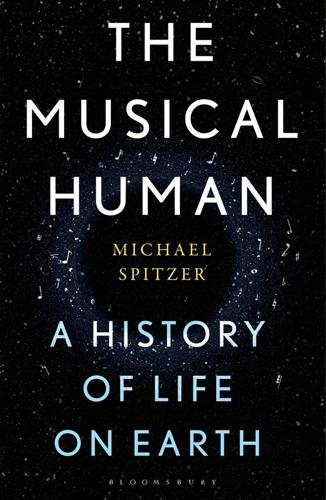
The Musical Human: A History of Life on Earth
by
Michael Spitzer
Published 31 Mar 2021
Such a history would go deeper than the usual story of who wrote what and when (Bach, 1685–1750; wrote the St Matthew Passion in 1730). It would be a party to which all are invited: King David with his lyre and the composers of the psalms; Pythagoras; Lucy the australopithecine; singing apes and dancing parrots. It would begin with the cosmic music of the spheres and how simple organisms flinch to sounds. It would take in the protomusical languages of early Homo sapiens, and ask what marks them apart from birdsong or the calls of gibbons. It would track the dissemination and parallel development of musics around the planet, and focus on how and why Western music splintered off as a law unto itself, not as an inevitable triumph, but with consequences both good and bad.
…
By contrast to the walking music historians of the Australian Northern Territory, Mali or North America, another window into music in world history is peoples’ own origin myths, the stories cultures themselves tell about where music comes from. Although each culture has its own musical origin myth, one aspect is very common. It is extraordinary how much of the world imagines that music emanates from the resonance of the cosmos, that musical harmony comes out of universal harmony, the music of the spheres. One of the earliest such myths is inscribed on a set of Bronze Age chime-bells discovered in China in 1978. The so-called ‘Marquis Yi of Zeng’ bells, dated around 400 bc, are engraved with a system of music notation. This is one of the first examples of a music theory that hears in the harmoniousness of music an echo of the harmoniousness of the universe as well as a model for good government, a way of thinking that stamps Chinese thought for thousands of years.
…
Yet by speeding up these frequencies into audible sound, asteroseismologists, such as Bill Chaplin at Birmingham University, have developed a tool for figuring out what is happening inside galaxies.2 The composer Trevor Wishart closed the circle by sonifying electromagnetic spectra into acoustic spectra.3 Wishart’s piece Supernova puts a wonderful new spin on the myth of the ‘music of the spheres’, which has haunted the West for thousands of years. For instance, in his Harmonics, written in the second century ad, the Egyptian mathematician Ptolemy compares three types of stellar movements (the rise and fall of the planets) with three kinds of melody.4 Until Chaplin and Wishart came along, it would have taken a divine ear to perceive such music.
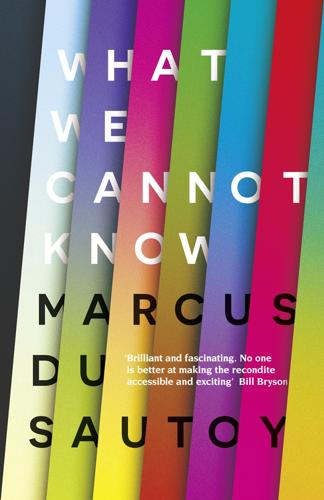
What We Cannot Know: Explorations at the Edge of Knowledge
by
Marcus Du Sautoy
Published 18 May 2016
The tension between the continuous versus the discrete nature of matter, between what is possible mathematically versus the limits placed by physical reality, has been raging for millennia. Is the universe dancing to the sound of my trumpet or shimmying to the glissando of my cello? THE MUSIC OF THE SPHERES How did I personally come to know about these electrons and quarks that are believed to be the last layer of my dice? I’ve never seen them. If I actually ask myself how I know about them, the answer is that I’ve been told and read about them so many times that I’ve actually forgotten why or how I know.
…
Having found that whole numbers were at the heart of harmony, the Pythagoreans began to build a model of the universe that had these whole numbers as the fundamental building blocks of everything they saw or heard around them. Greek cosmology was dominated by the idea of a mathematical harmony in the skies. The orbits of the planets were believed to be in a perfect mathematical relationship to each other, giving rise to the idea of the music of the spheres. More importantly for understanding the make-up of my dice, it was also believed that discrete numbers rather than a continuous glissando were the key to understanding what constituted matter. The Pythagoreans proposed the idea of fundamental atoms that, like numbers, could be added together to get new matter.
…
Fire, earth, air and water, the four elements of Aristotle, had been reduced to three particles: the electron, proton and neutron. With these three building blocks scientists believed they could build all matter. Oxygen: 8 protons, 8 neutrons and 8 electrons. Sodium: 11 protons, 12 neutrons and 11 electrons. It was as if the music of the spheres was singing out and the foundations of matter were these notes: protons, electrons and neutrons. All matter seemed to be made up of whole-number combinations of these three particles. Why would you expect these particles to be made up of smaller entities? If they were, you might expect to see fractional pieces between the elements in the periodic table.
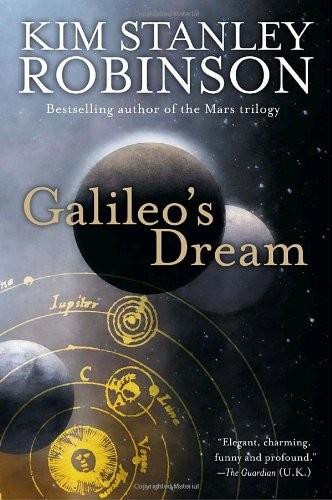
Galileo's Dream
by
Kim Stanley Robinson
Published 29 Dec 2009
Kepler was experienced enough to ignore backstabbing by such a loathsome toad, but his characteristically long and incoherent letter in support of Galileo’s discoveries, published as a book for the world to read under the title Dissertatio cum Nuncio Sidereo, was in some ways as bad as the Horky nonsense. Confusions from Kepler were nothing new—although up until this point they had always made Galileo laugh. One time for the sake of his artisans he had translated into Tuscan Kepler’s claim that the music of the spheres was a literal sound made by the planets, a six-note chord that moved from major to minor depending on whether Mars was at perihelia or aphelia. This idea made Galileo laugh so hard he could barely read. “The chapter’s title is ‘Which Planet Sings Soprano, Which Alto, Which Tenor, and Which Bass!’
…
Again he rang like a bell. His flesh buzzed like bronze, his hair stood on end. How things worked; it had to be; and he rang. He danced. He circled his occhialino like the Earth circling the sun, spinning in a slow four-step as he made his little orbit on the altana, arms swinging, fingers directing the music of the spheres, which despite Kepler’s craziness seemed suddenly plausible. Indeed an audible chord was now ringing silently in his ears. Then came a knock on the door below. He halted his dance with a jerk, looked down the staircase on the outside of the house. Cartophilus was there inside the gate, holding a shuttered lantern, looking up at him.
…
The difficulty of comprehending how the cicada forms its song, even when we have it singing to us right in our hands, ought to be more than enough reason for us to decline to state how comets are formed or anything else. When Cesi read this addition to the new book he was puzzled, and wrote back to ask what it meant. Was it a way of saying that Coperni-canism might not be the correct explanation for the movement of the planets after all—the cicada’s song representing therefore something like the music of the spheres? Galileo wrote back tersely. I know certain things which have been observed by no one but myself. From them, within the limits of my human wisdom, the correctness of the Copernican system seems incontrovertible. Maffeo Barberini becoming pope had been a miracle; him making his nephew Francesco into a cardinal just three days after Francesco had joined the Lincean Academy was another miracle.
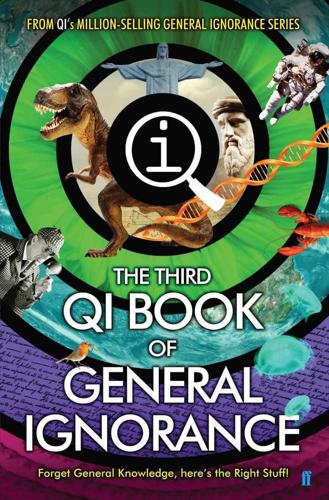
QI: The Third Book of General Ignorance (Qi: Book of General Ignorance)
by
John Lloyd
and
John Mitchinson
Published 28 Sep 2015
A keen player of the lyre, he observed that the pitch of a musical note was in proportion to the length of the string that produced it, and that intervals between harmonious sound frequencies formed simple numerical ratios. By applying this insight to everything from human emotions to the movement of the planets, he created a holistic vision of a musical universe where opposites were constantly striving towards harmony. The underlying order, the secret ‘music of the spheres’, was the mathematically determinable series of notes each planet made as they orbited the Earth. Born on the island of Samos in the Dodecanese archipelago, he spent time in both Egypt and Persia studying with priests and philosophers before establishing his own school in the city of Croton on the south-eastern coast of what is now Italy.
…
A. 1 mind palace memory technique 1 mine detection 1 minstrel songs 1 misery whip 1 missing persons 1 missionaries 1 MITCHELL, DAVID 1, 2, 3, 4, 5, 6 mites 1, 2 Mohs, Friedrich 1 his scale 1 molluscs 1 Molloy, Doug 1 Monaco 1 monasteries 1, 2, 3 Mongol Rally 1 monks 1, 2 monkeys 1, 2 monogamy 1 Moon 1, 2, 3, 4, 5, 6, 7 Moon, Lottie 1 Moore, Demi 1 Moore, Patrick 1 Morgan, J. P. 1 morphine 1 Morris, William 1 mosses 1, 2 Mothering Sunday 1 moths 1, 2, 3 motoring 1 motorways 1 mourning 1 Mozart 1, 2 Mulcaster, Richard 1 Müller von Thomamuehl, Dagobert 1 mummification 1, 2 Murray, George 1 music, misattribution of 1, 2 music of the spheres 1 musical instruments 1 Mussolini, Benito 1, 2 mustard gas 1 nachos 1 Nahuatl language 1, 2 names 1, 2, 3, 4, 5 Namibia 1, 2 Nance, Nejdra 1 Napoleon Bonaparte 1 Napoleonic Wars 1, 2 NASA 1, 2, 3, 4, 5, 6, 7, 8 Nash, John 1 National Climatic Data Center (US) 1 National Football League (US) 1 National Rifle Association 1 Native Americans 1, 2, 3, 4 NATO 1 Nauru 1 Nazis 1, 2 Naylor, Robert and John 1 Neanderthals 1 necks 1 necrophilia 1 Nelson, Horatio 1 nematodes 1 nephrostome 1 Neptune 1, 2 Nero, Emperor 1 nests 1, 2 neuroscience 1, 2 New York 1, 2, 3, 4, 5, 6 Newton, Battle of 1 Niagara Falls 1 NICE 1 Nicholson, William 1 Niépce, Joseph Nicéphore 1 Nigeria 1, 2, 3 Nile, River 1 Nissen, Peter 1 Nnebue, Kenneth 1 Nobel Prizes 1, 2, 3, 4 NOBLE, ROSS 1, 2, 3, 4 Nollywood 1 non-alignment 1 Norman Conquest 1, 2, 3 North Africa 1, 2 North America 1, 2, 3, 4, 5, 6, 7 North Korea 1 Northern Ireland 1 Norway 1, 2 nose bleeds 1 nuclear disarmament 1 nuclear fusion 1 nuclear power stations 1 nuclear waste 1 oak 1 obesity 1, 2 O’BRIAIN, DARA 1 Observatoire du Pain 1 Occitan language 1 O’Connor, Sinead 1 octopuses 1 Oddi, Ruggero 1 Odon, Jorge 1 Odysseus 1 Odyssey 1, 2 oenology 1 Ohno, Susumu 1 Oholah 1 Oholibah 1 oil 1, 2, 3, 4, 5, 6 Old Norse language 1, 2 O’Leary, Dan 1 Olive Oyl 1 Olympic Games 1, 2, 3 OMG 1 onions 1 opium 1, 2 orange (colour) 1, 2, 3 oranges (fruit) 1, 2, 3 orchids 1 organ, pipe 1 OSMAN, RICHARD 1 Osmanagic, Semir 1 osmosis 1 osteotome 1 Otway, Thomas 1 Oxford English Dictionary 1, 2, 3 oxygen 1, 2, 3, 4, 5, 6, 7, 8, 9 ozone 1, 2 Pacific Ocean 1, 2 package holidays 1 Paddington Bear 1 paedophilia 1 Page, Hilary Fisher 1 pain 1 Pakington, Dorothy 1 Pakistan 1, 2 Paläoweltschmerz 1 Palmer, Henry Robinson 1 Pan 1 pandas 1 Pantites 1 paper bags 1 papples 1 parakeets 1 parasites 1, 2, 3 Paré, Ambroise 1 Paris 1, 2, 3, 4, 5 Paris Peace Accords 1 Paris–Rouen Horseless Carriage Competition 1 Parker, Gilman C. 1 parrot fish 1 parrots 1 Parthenon 1 Partridge, Eric 1 PASCOE, SARA 1, 2 Passover 1 Pavlov, Ivan 1 Pechmann, Hans von 1 Peeping Tom, 1 pelicans 1 penguins 1, 2, 3, 4 pepper 1 Pepys, Samuel 1 perfume 1, 2, 3 perihelion 1 PERKINS, SUE 1, 2 Permian period 1 Persia 1, 2, 3, 4, 5 Peru 1, 2, 3, 4 Peter the Great 1 Peter Pan 1 petrels 1 petrol 1 Pettway, Ann 1 Phelps, Michael 1 pheromones 1 Phidias 1 Philip I of Spain 1 Philip II of France 1 Philip II of Macedon 1 Philip II of Spain 1 Phoney War 1 phosphate 1 photographs 1 photons 1 physiognomy 1 piadina 1 pickling 1 piercings 1, 2 Pierpont, James Lord 1 pigeons 1 pigs 1, 2, 3, 4, 5, 6 Pike, Oliver 1 Pilgrim Fathers 1 pili 1 Pineapple Express 1 piperine 1 Planck epoch 1 plaster of Paris 1 plastic bags 1, 2 Plataea, battle of 1 platform shoes 1 Plato 1, 2 Pliny the Elder 1, 2, 3, 4, 5 plumcots 1 pluots 1 Plutarch 1 Pluto 1, 2 Plymouth, Massachusetts 1 Plymouth Rock 1 poisons 1, 2, 3 Poland 1, 2 polar bears 1 police 1 political correctness 1, 2 pollination 1 polyethylene 1 polyps 1 polythene 1 pomelo 1 Pompeii 1 Pontefract cakes 1 Popemobile 1 Popeye 1 Popeye (film) 1 pornography 1 Portuguese language 1, 2 Portuguese men-o’-war 1 Poseidon 1 postage stamps 1 potatoes 1, 2 Potter, P.

Rise of the Rocket Girls: The Women Who Propelled Us, From Missiles to the Moon to Mars
by
Nathalia Holt
Published 4 Apr 2016
How well the groups balanced their separate interests would determine not only the current mission’s success but also how well they worked together in the future. Around 11 a.m. a strange, chordlike sound was heard as they established radio contact with the spacecraft. Hearing the sounds as they were picked up at the large dish antenna at Goldstone, Bill Pickering said, “Listen to the music of the spheres.” For forty minutes, they did. Data gushed in as Mariner, using infrared and microwave radiation meters capable of breaking through the planet’s dense cloud cover, scanned Venus. They held on to the signal as long as they could, mindful that each additional minute was giving them a wealth of information.
…
However, the role that the missiles played in the crisis wasn’t revealed to the American public until 1987. Pythagoras, the Greek mathematician, is credited with the saying “There is geometry in the humming of the strings. There is music in the spacing of the spheres.” Bill Pickering told the newspaper reporters, “Listen to the music of the spheres.” His words were repeated in many newspaper columns, including Philip Dodd, “Rendezvous with Venus a Success!,” Chicago Daily Tribune, December 15, 1962. Mariner’s float in the 1963 Rose Parade is described in David S. Portree, “Centaurs, Soviets, and Seltzer Seas: Mariner 2’s Venusian Adventure (1962),” Wired, December 20, 2014.
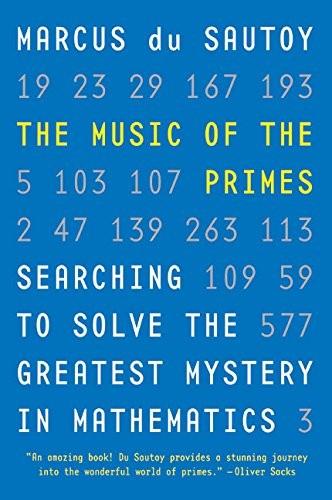
The Music of the Primes
by
Marcus Du Sautoy
Published 26 Apr 2004
Any other notes which were created by removing some other amount of water sounded in dissonance with that original note. There was some audible beauty associated with these fractions. The harmony that Pythagoras had discovered in the numbers made him believe that the whole universe was controlled by music, which is why he coined the expression ‘the music of the spheres’. Ever since Pythagoras’ discovery of an arithmetic connection between mathematics and music, people have compared both the aesthetic and the physical traits shared by the two disciplines. The French Baroque composer Jean-Philippe Rameau wrote in 1722 that ‘Not withstanding all the experience I may have acquired in music from being associated with it for so long, I must confess that only with the aid of mathematics did my ideas become clear.’
…
and Ramanujan 134, 135, 137–41, 143 and the Riemann Hypothesis 150, 160 Lobachevsky, Nikolai Ivanovic 110 logarithms 46–9, 55, 62, 72, 74, 91, 104, 105, 168, 189, 206 Logue, Donal 240 Louis XV, King of France 41 Louis XVI, King of France 41 Lovelace, Ada 190 Lucas, Édouard 205, 206 Lucas-Lehmer numbers 206, 207 m-commerce 248 Manasse, Mark 239 mathematics: a creative art under constraints 34 irrespective of race 184, 199 plunged into crisis 156 pursuit of order 6 Matijasevich, Yuri 198–9, 201 Mendeleev, Dmitri 23, 32, 36–7 Mendelssohn, Felix 75 Mersenne, Marin 40, 41, 44, 93, 204–5 Mersenne primes 17, 206–9, 224, 236 Mertens Conjecture 219, 221–2 Miller-Rabin test 245 Millennium Problems and Prizes 14–16, 33, 242, 246, 250, 252 Miller, Gary 245 Miller, Victor 248 Minkowski, Hermann 108, 114, 116, 211 MISPAR (a computer language) 4 modular arithmetic 9 Monbeig, M. 290 Montgomery, Hugh 254, 255–64, 267, 269–72, 275, 278, 307, 312 Mordell, Louis 258 Motchane, Léon 299, 303 music 77–9, 84, 125 ‘music of the spheres’ 77 of the primes 93–7, 310, 311 Riemann’s 278–9 Nachlass 151–153, 286–287 Napier, Baron John 46 Napoleon Bonaparte 17, 53, 57, 59, 60, 64, 78, 94, 96, 265, 266, 289, 299, 311 Nasar, Sylvia 304 Nash, John Forbes 304 National Bureau of Standards’ Institute for Numerical Analysis 207 National Physics Laboratory, Teddington, Middlesex 191 National Security Agency (NSA) (US) 12, 249 NATO 302 negative numbers 67–8, 68 neutrons 265, 268 Nevanlinna, Rolf 294 Neville, E.H. 139, 140–41 Newman, Max 183, 184, 186, 187, 191, 204,207 Newton, Sir Isaac 119, 123, 269 Noether, Emmy 194 non-communicative space of Adele classes 307 Norwegian Mathematical Society 157 Nth Fermat number 39 nucleus 264–5 Occam’s razor 215 Odlyzko, Andrew 220, 221–2, 221, 253, 254, 270, 271, 272, 275–6, 278, 279, 280, 312 Oppenheimer, Robert 263 parallel lines 109–10 particle accelerators 270 particle physics 4 partition function 143 partition numbers 141–3, 142, 158 Periodic Table of chemical elements 23, 32, 36, 224, 264, 265, 268 Peter the Great 41 physics 74, 84 pi (film) 28 Piazzi, Giuseppe 19 planetary orbits 188 Poincaré, Henri 1, 6 Pomerance, Carl 238–9, 240, 245 Prime Number Conjecture (later Theorem) see under Gauss, Carl Friedrich prime numbers: apparent randomness 5, 6, 7, 9, 47 and cicadas 27–8 definition 5 Fermat’s Little Theorem see under Fermat, Pierre de and Germany’s educational revolution 60 hunting for 38–41 importance to mathematics 5 infinity of 36, 76, 81, 106–7, 163, 205, 310 largest known 204, 205, 207, 208, 209 list of 5–6, 5, 22, 23, 24, 37, 199 and logarithms 46–9, 55, 62, 72, 74, 104, 105, 168, 206 and longevity 311–12 masters of disguise 130 music of 93–7, 310, 311 Riemann’s formula for the number of 89, 90–91, 90 story of primes as a social mirror 34 tables of 47–8, 48, 205–6 an unanswered riddle 314 probability theory 165, 166, 272, 313 Problem of the Bridges of Königsberg 43, 44, 106 Project Orion 263 protons 265, 268 Proust, Marcel 255 Prussia 59 Pryce, Maurice 187 Ptolemy I 36 Putnam, Hilary 198 Pythagoras 67, 77, 78, 93 Pythagoras’ theorem 67 quadratic sieve 238–9, 240 quantum billiards 275–80, 277, 282, 288 quantum chaos 279, 280, 281, 283, 298, 307, 311 quantum mechanics 279 quantum physics 4, 117, 166, 263, 264, 266, 267, 269, 273, 276, 280, 284, 286, 296, 305, 306, 307,311, 313 Rabin, Michael 245 Rademacher, Hans 158 Ramanujan, Srinivasa 27, 132–47, 133, 157–8, 164, 245, 262, 294 Ramanujan’s Tau Conjecture 16, 146 Rameau, Jean-Philippe 77 real numbers 68, 68, 69, 85 Redford, Robert 240 Reid, Legh Wilber 102 Ribenboim, Paulo 245 Riemann, Bernhard (main references) 63, 286–7 creates the Hypothesis 9 and Dirichlet 168 education 61–5, 72–5, 84 formula for number of primes 89, 90–91, 90 geometry 74, 113, 289, 307 imaginary numbers 66, 84, 88, 251, 286, 287 influences 61–2, 63, 66, 75–6, 82, 132 mathematical looking-glass 9, 90, 99, 167, 168 notebook 153–4 order out of chaos 97–101 paper on prime numbers 82–3, 84, 96, 100, 103, 106, 149, 150, 153 perfectionism 61, 82, 101 rescued notes 101, 151 Siegel discovers his secret formula 152–3, 213 succeeds Dirichlet 83, 100 visits Italy 100–101 and zeta function 81–2, 84–7, 137 Riemann, Elise (née Koch) 100, 101, 151 Riemann Hypothesis 33, 166, 176 assumed to be true 130, 131, 143 Bombieri’s interest see under Bombieri Cohen and 202 and commercial interest 11, 12 Connes’ work 3, 4, 288–289, 305, 307–9 Hilbert and 1–2, 114, 115, 243 importance 138–9 Landau’s criticism 149–50 a Millennium Problem 14, 15, 309–10, 312 probabilistic interpretation of 167 proof issue 4, 5, 9–10, 11, 14, 17, 18, 114–15, 159–60, 171–5, 178, 181, 182, 183, 188, 192, 196, 204, 212–16, 218–19, 222, 243, 245, 279, 281, 287, 288, 290, 294,297, 298, 301–2, 304, 307–10, 312,313 published 83 Selberg on 159–60, 173–4 Stieltjes’ claim 103 Rivest, Ron 11, 227–31, 229, 233–6, 238, 239, 242, 244, 249–50 Robinson, Julia 193–9, 195, 201, 202, 204, 205 Robinson, Raphael 196, 197, 207 Rota, Gian-Carlo 172 Royal Society 145, 189, 190 Computing Laboratory 191 RSA 12, 230, 231, 232, 235–9, 241–4, 246–50, 252, 253 ECC Central 249, 250 RSA 129 challenge 236–7, 239 RSA 155 challenge 240 Russell, Bertrand 128, 136, 138, 144, 178 Sacks, Oliver 8, 9, 39 Sagan, Carl 1, 7–8, 9, 28, 271, 280 Sarnak, Peter 127, 224, 281–3, 287, 296, 298, 307, 308, 309 Saxena, Nitin 245 Scandinavian Congress of Mathematicians (Copenhagen, 1946) 159 Schmalfuss (director of the Gymnasium Johanneum) 60–61, 63 Schneier, Bruce 242 Schoenberg, I.J. 154 Schrödinger, Erwin 284 Schwartz, Laurent 172 Science Museum, London 189 Second World War 154, 155–6, 160, 174, 175, 190, 192, 225, 241, 263, 289, 293–4 Selberg, trace formula 17 Selberg, Atle 16, 156–60, 157, 162, 167–74, 176, 177, 212–13, 261, 262, 263, 285, 288, 294, 295, 301–2, 307–8, 311–12 Severi, Francesco 296 Shamir, Adi 11, 228–9, 229, 230, 236, 238, 249 Shimura, Goro 298 Siegel, Carl Ludwig 148–9, 151–4, 156,188,213,251,297 Siegel zero 17 sieve of Eratosthenes 17, 23, 24, 239 Silverman, Joseph 250, 252, 253 sine function 72 sine waves 95, 96, 188 Skewes, Stanley 129, 130 Skewes Number 129 Slowinski, David 207, 208 Snaith, Nina 284, 285 Sneakers (film) 240, 242 Snow, C.P. 136–7, 147 space, as curved and non-Euclidean 128 spectroscopy 88, 224 Stalin, Joseph 293 Standards Western Automatic Computer (SWAC) 207 Stark, Harold 220, 221 Stieltjes, Thomas 102–5 string theory 306 super-symmetric fermionic-bosonic systems 4 Survive 303 Swinnerton-Dyer, Sir Peter 127, 250–52 Tarski, Alfred 197 te Riele, Herman 217, 218, 222 Teichmüller, Oswald 155 Thomson, J.J. 128 tides 188–9 Titchmarsh, Ted 188, 190, 192 triangular numbers 24–5, 26, 26, 29, 32, 52 trivial zeros 98 Trinity College, Cambridge 122–4, 124, 127–8, 144 Truman, Harry 172 Turán, Paul 169, 170 Turing, Alan 175–7, 177, 227 artificial intelligence 176 at Bell Laboratory 219 and the Enigma code 175, 190–91, 205, 206 and Hardy 187, 188 death 192 homosexuality 192 and the Riemann Hypothesis 175, 188, 191, 212 Turing machines 182–93, 197, 198, 199, 202–3, 204, 207, 213, 215 twin autistic-savants 8–9, 39 Twin Primes Conjecture 39, 181, 257, 258 uranium 268 van de Lune, Jan 219 Vernon, Dai 271–2 Vijayaraghavan 293, 294, 296 Wagner, Richard 59 Waring’s Problem 116 wave equation 266 Weber, Heinrich 154 Weber, Wilhelm 73–4 Weil, André 31, 180, 288–300, 293, 302, 305, 306, 308 Weyl, Hermann 160, 171 Wigner, Eugene 268–9, 270 Wiles, Andrew 4–5, 12–17, 29, 34, 115, 118, 171, 248, 251, 252, 282, 298, 313 William of Occam 215 Wittgenstein, Ludwig 128 Wolfskehl, Paul 15, 118 Wolfskehl Prize 15, 136 Woltman, George 208 Zagier, Don 213–19,214, 217, 252, 278 Zeilberger, Doron 309 zeta function 76–82, 84–6, 86, 88, 89, 128, 137, 144, 153, 158, 167, 168, 190, 220, 251, 258, 273, 283, 295 P.S.

Big Bang
by
Simon Singh
Published 1 Jan 2004
Similarly, we ought not to ask why the human mind troubles to fathom the secrets of the heavens… The diversity of the phenomena of Nature is so great, and the treasures hidden in the heavens so rich, precisely in order that the human mind shall never be lacking in fresh nourishment.’ Beyond his research into elliptical planetary orbits, Kepler indulged in work of varying quality. He misguidedly revived the Pythagorean theory that the planets resonated with a ‘music of the spheres’. According to Kepler, the speed of each planet generated particular notes (e.g. doh, ray, me, fah, soh, lah and te). The Earth emitted the notes fah and me, which gave the Latin word fames, meaning ‘famine’, apparently indicating the true nature of our planet. A better use of his time was his authorship of Somnium, one of the precursors of the science fiction genre, recounting how a team of adventurers journey to the Moon.
…
S. 481 Hale, George Ellery 185-9, 188, 218, 374-5 Hale, William 185 Hale Telescope 375 Halley, Edmund 239-40 Harvard College Observatory 157, 204, 207,220,374 Harwit, Martin 418 Hauser, Mike 454 Hawking, Stephen 366, 463 helium 237-8,247; abundance 284-5, 308-9,318-19,326, 327,332,397, 473,476; atom 293, 294,297,322; formation 311,318,320,328, 473, 486; nuclear fusion 300-2,303-5, 304,310; transformed into carbon 389-94, 392,396; transition from plasma to atoms 330, 331 Henry, Paul and Prosper 204 Heracleides of Pontus 22 Heraclitus of Ephesus 79 Herman, Robert 335,397,471,476, 481—3; CMB radiation predicted 332-3,429-31,434-6,456,473; work on recombination 326—36 Herodotus 10 Herschel, Caroline 170—1 Herschel, Sir John 177,201-2, 202 Herschel, William 169-74, 170, 172, 177-81,195,197,402 Hertzsprung, Ejnar 212 Hess, Viktor 158 Hey, Stanley 409-10, 411 Hoffmann, Banesh 98 Hoffmann, Roald, and Djerassi, Carl: Oxygen 470 Hooke, Robert 117-18 Hooker, John 188,402 Hooker Telescope 188-9,220, 222,272,373,374 Houtermans, Fritz 300-3,310 Hoyle, Fred 337-52, 339, 342, 364, 379, 384,425, 441; collaboration with Bondi and Gold 340—5; names Big Bang 352-3,483; The Nature of the Universe 351; popular science 351-2,359; and Ryle 413, 416-17, 419; and Steady State universe 344—9, 349, 361,421,438-40,483; work on nucleosynthesis 386-401, 399,471, Table 5 Hubble, Edwin Powell 216, 220,274, 360,373,471; distance blunder 377—80; galactic distance calculations 214-29,224,254,372-3; Hubble constant 256—8; Hubble’s law 256, 257, 273, 420; redshift observations 248-61, 259,270,277-9,282,336 Huggins, Margaret 238,239,244 Huggins, William 238-9, 238,241, 244-6 Humason, Milton 250-2,255,258-60, 259,273,279 Hutton, James 79 Huxley, Thomas 9 Hyades 135 hydrogen 247, 420, 486; abundance 283-5,308-9,318,323,326, 327,369, 473,476; atom 293-5, 294,297,322; at Big Bang 310, 320; fusion into helium 300-2, 303-5, 304,309,397; intergalactic clouds 424; transition from plasma to atoms 330, 331 Ibn Sina 88 Independent 472, 474—5 inflation 477-9, 482, 488 infrared 230, 233,407 interference 95 interferometry 412 International Astronomical Union 364, 379, 422 Io 90-1, 91 isotopes 293, 294,302,303, 304, 400 Jansky, Karl 403-6, 404,422,433 Janssen, Jules 237 Jastrow, Robert 433, 490 Jodrell Bank 412 John XII, Pope 45 John Paul II, Pope 485 Johnson, Samuel 196 Joliot, Irene 312 Joly, John 78 Jupiter 27, 28,130, 131; moons of 63, 64, 67,90-1, 91, Table 3 Kant, Immanuel 180,181, 184 Kelvin, William Thomson, Lord 78, 93-4 Kepler, Johannes 51-9,61,62, 71,129, 367, 401; Astronomia nova 57—8; on date of creation 76; laws of planetary motion 54—7, 57,119,124; on music of spheres 59; Mysterium cosmographicum 53; Sun-centred universe 53—4, 63 Khriplovich, Iosif 302 kinematic relativity 277 Kirchhoff, Gustav 237,238 Koestler, Arthur 32 Kozyrev, Nikolai 363 Kuhn, Thomas S. 367 Langevin, Paul 312 La Roux, Emile 433 Larsen, Jakob 217 Laslett, Peter 352 Laughton, Charles 375 Leavitt, Henrietta 206-13, 208, 211,223, 225,226,376 le Gentil, Guillaume 136—7 Lemaître, Georges 157,167, 249, 362, 384; forerunner of Big Bang theory 156-61, 254,258,277, 309, 434, 471; and Eddington 268-9, 280; and Einstein 273,274-6, 275; Hypothèse de l’atome primitif 160; nucleosynthesis 309 lenticular altocumulus cloud 344 Leslie, John 487 LeVerrier, Urbain 125 Libri, Giulio 67 Lick Observatory 186,190 life 366, 473, 486-9 light: bending of 130-1, 131, 132,135, 137-40, 141; Doppler shifts 244-6, 245,270; nature of 230; Olber’s paradox 440; primordial sea of 314, 328,360,429, 472-3; at recombination 330-3,331; remnant 332; tired light theory 279-80; transmission of 92-3,97,102; see also sepctroscopy; speed of light light year 176 lightning 87, 88 Lippershey, Hans 61 lithium 398 Lockyer, Sir Norman 237-8 Lodge, Oliver 141 Lorentz, Hendrik 140 Louis XV, King of France 178 Lov, V.E.364 Lovell, Bernard 410-12 Lowell, Percival 247 Lowell Observatory 247,250 Luther, Martin 40 Lyell, Charles 79 McVittie, George 268 Marić, Mileva 106-7 Mars 27,28, 29,30,31, 53-4, 56 Marsden, Ernest 290-2, 291, 296 Massachusetts Institute of Technology 157,315 massive compact halo objects 479 mathematics 7-8,99,150-1,472 Mather, John 454,457 matter, states of 328, 329 Matthias, Berndt 9 Melvill, Thomas 232 Mendeleev, Dmitri 197, 287 Mercury 27,125; orbit 125-8, 127,129, 146; phases 63-5 Messier, Charles 178, 179,183 Mestral, George de 408 meteors 410 Michelson, Albert 94-8, 96,101,102, 103,215,267 Michelson—Morley experiment 94—7, 96, 101,102 microwaves 230,333,403,430,432,448 Milky Way 173-4,177-80,184,228; in Great Debate 189-92,219; pancake-shape 178,180,192; radio emissions 405; size 177,195,223 Millikan, Robert 215-17, 278 Milne, Arthur 277 Minkowski, Hermann 105 Mittag-Leffler, Gösta 213 Moon 6,8,20,62, 62,204,Table 3; half phase 16, 17; lunar eclipse 10,13, 14; measurements 13—15, 14, 15,20, Table 1 Morley, Edward 97, 101,102,103 Moseley, Harry 134 Mount Palomar Observatory 375,414 Mount Wilson Observatory 190,272-4, 278,375; Baade and Sandage at 373, 381; Hubble at 218-21, 220, 225, 248-51; Pasadena seminar (1933) 274-6,275; telescopes 187-9, 220, 222,272,373,374 Mullard Observatory 416 multiverse 488,492 music of the spheres 7-9,59 myth 4-6,7,18,80, 469,490 Narlikar, Jayant 439, 441 NASA 453-5 National Academy of Sciences, US 189, 206 Nature 269,350 nebulae 178-81,183,218; distances 206, 223; as galaxies 224,226; Great Debate on 189-94,198, 219,223-5; Messier’s catalogue 178, 179,183; spiral 183-4, 185; velocity measurements 247-8 neutron stars 168,280 neutrons 293-7,299,302, 304,314,316,327,472 Newton, Isaac 117-19,147,401; gravity theory 118-19,123,125-8,137,144 Nicholas of Cusa 36 noise 426-33, 461 North Star, see Polaris novae 192,193,195,222-3, 224,226, 258 Novara, Domenico Maria de 38 nuclear fission 297-300, 298 nuclear fusion 297-302,310-11,328 nuclear particle cross-sections 317,326 nuclear physics 267,295,299-300,305, 306,318,333 nucleosynthesis 437,473; Big Bang 308-18,322,323,385,397-8; chain of 389,Table 5; heavier elements 323—8, 385-400,473, 486; stellar 385-90, 398-400 nucleus 292,293-5,294,297,299,308; 5-nucleon 323-5,328; excited 393-6; strong nuclear force 303,486 Occam,William of 45; Occam’s razor 45-6 O’Connell, Daniel 362 Olbers, Wilhelm 177; Olber’s paradox 440 Oresme, Nicole d’ 36 Osiander, Andreas 41,43,44 Oxford University 206,216-17 paradigm shifts 367-8, 470 parallax 25-7, 26,174,184,212 Parker, George 216 Parsberg, Manderup 47 Pasteur, Louis 409 Pauli, Wolfgang 288 Payne, Cecilia 141 Peebles, James 431,434-5,479 Peierls, Rudolf 338 Penrose, Roger 366 Penzias, Arno 422-37, 427,471,473 periodic table 286-7, 287, 293, 294 Petreius, Johannes 40 Philolaus of Croton 22 photoelectric effect 107 photography 201-4,207, 247,374 Physical Review 319,361 Pickering, Edward 204, 205 Pigott, Edward 195-6,198,201 Pigott, Nathaniel 197 Pius XII, Pope 360-2,484 Planck, Max 75,115,123 planets 479; Copernicus on 38, 42, 53-4; discovery of 169-70; distant 39-40, 179; Greeks on 8,27—8; Kepler’s laws of motion 53-6, 57; orbits 49, 50, 54-6, 57,119,124, 367; phases 63-5, 66; Ptolemaic model 30-3, 31,36; retrograde motion 27,28-30, 29,38, Table 2,3; speed variations 54, 56, 57 plasma 328-30, 329, 331, 333 Plato 28 Pleiades 203-4 Poincaré, Henri 18,19 Polaris (North Star) 199-200 politics 306-7,363-4 Pontifical Academy of Sciences 360,362 Potsdam Observatory 134 Poupard, Cardinal Paul 485 Prague 51,72-3 primeval atom 159,269-70,276,280,309 Princeton Observatory 203, 227 Procyon 239 proper motion 240-1, 240,246 protons 292-5, 294, 297, 299, 304,314, 316,527,472 Ptolemy 63, 77,148,240; Almagest 32, 33, 36; Earth-centred universe 28-33, 36,38, 44-6, 65; planetary theory 30-2, 31, 36,124,128,332 pulsars 168,400 Purcell, Edward 433 Pythagoras 7-9,59 quantum physics 107,267,402,491-2 quasars 420—1 Quasi-Steady State model 439-40, 483 quintessence 239 Rabi, Isidor Isaac 99 radar 340,409-12, 411 radio astronomy 406, 409-14, 411, 416, 418,422,426 radio galaxies 414-20, 425 radio interference 403-5 radio waves 410-14, 430; noise 426-33, 461 radioactivity 285—9, 297-8; radioactive decay 158-9 radium 286, 290, 291,297-9, 298 Ratcliffe, John 288 recombination 330-3, 331,429 redshift 244, 245,333,420; galactic 248, 252, 259,270,273,277-80,282,377, Table 4,6 Rees, Martin 366, 401, 485-6,488 relativity 244, 307; Galilean 99-101,102, 105,110,114,145; general 116-37, 143-9, 153,273-4,285,347,471,477; kinematic 277; special 108-16, 111, 145,298-9 religion 7, 16,18,76,306,361-2,364, 439,469,485,490; see also Catholic Church retrograde motion 27,28-30, 29,38, Table 2,3 Rheticus (G.J. von Lauchen) 40, 41, 43, 44, 53,56 Robinson, Thomas Romney 181 Römer, Ole 89-92, 91 Röntgen, Wilhelm 8 Rosse, Lord 181-4, 183, 185,401 Royal Astronomical Society 140,201; Monthly Notices 269 Royal Society 140,142, 200; Copley Medal 197-8 RR Lyrae stars 374-5, 377 Rudolph II, Holy Roman Emperor 51 Russell, Henry Norris 227 Russia 149,151 Rutherford, Ernest 288-95, 288, 291,312; atomic model 292-5, 294,299, 368 Ryle, Martin 412-18, 419, 471 Sagan, Carl 228, 484 Sandage, Allan 381-3, 384 satellites 424-5; COBE 453-63, 458, 473;WMAP 481, 482 Saturn 27, 28 Schmidt, Maarten 418 Schwarzschild, Karl 134 Sciama, Dennis 366, 421-2 science 7,18-20, 60,76, 218, 283, 495-8; compliance in 378-9; experimental/observational 167,268, 272; measurement 381; popular 334-5,351-2, 359; scientific method 57,469-70; scientific progress 71, 75, 124,127,367-8; Soviet 306-7,363-4; testing 63,128-9,168; theoretical 8-9, 124,126,128-9, 149,272,367,413, 440 Science News-Letter 364 Scientific American 435 self-propagation 366 Selig, Carl 98 serendipity 408-10, 433,469 Shakespeare, William: Julius Caesar 199 Shapley, Harlow 190-4, 191,212, 219-21,224-8 Shmaonov, Tigran 433 sidereal day 405 Silberstein, Ludwig 136 singularity 489 Sirius 172-3,174,239,244 Sizi, Francesco 67 Skellet, Melvin 405 Slipher,Vesto 247-9,250,251-2,256 Small Magellanic Cloud 209-10, 211, 226 Smith, Barnabas 117 Smithsonian National Air and Space Museum 437, 439 Smoot, George 450-4, 456,459-62 Sochocky, Sabin von 286 sodium 232, 234,235, 235, 236,237 Solar System 22-5,54,57-8,118-19, 145 Solvay Conferences 160,307, 312, 384 Sombrero Galaxy 247—8 sound 92,93,243-4,406; speed of 88, 90-1 space 87,98,120,228,472,477,490; stretching of 270-1, 271 spacetime 120-3, 121,130,131, 131, 146-7 spectroscope 229, 236,237,246,251 spectroscopy 235—8; absorption 235, 235, 236,244,245, 259; recessional velocities 239,241,244-6,377,480; stellar composition 235-8 speed of light 87-92, 91,94,145; constancy of 103-5,107-8 stars 6,16, 25-7; age of 372,378; birth of 192,369,473; catalogues 204-7; classification 206; colour 232; composition 232,235,237-8,247; death of 387-8,473; distances 172-7, 176,195,212-13; equilibrium state 200,386; life-cycle 386-7; magnitude (brightness) 209-12, 211,381-2; populations 376-7; proper motion 240-1,240,246; radial velocity 239-41, 245-6, 245,247; radio emissions 410; second-/third-generation 391; stellar fusion 302—3, 305,310-11; stellar shift 130-2, 131, 132,139; stellar parallax 25-7, 26,38, 132,174-5, 178,Table 2, 3; stellar spectroscopy 235—8; temperature 232, 233; wavelengths of starlight 232, 233; young 179,181 Steady State model: development of 341-7; loss of credibility 418-21, 438—40; and nucleosynthesis 397; Quasi-Steady State model 439-40, 483; and radio galaxies 415-21; versus Big Bang 346, 348-52,359,364-5, 368-72,397,417, 430,432,440-1, 448, 459,Table 4, 6; and young galaxies 348 Steklov, Vladimir 149-51 Stoney, Johnstone 182 Sun 6,8, 63,389,Table 3; composition 235-8,236,300; gravitational field 125,130-1,139; measurements 10,13, 16-17, 17, 18, 20,38,Table 1; nuclear reactions 300-1,303-5, 304, 310; radio emissions 410, 411; solar eclipse 17,20, 71,132-3,135,138-40, 141; solar spectrum 236, 236,237 Sun-centred universe 65—72, 66, 75,124, 367,Table 2,3; Aristarchus’ model 22-7, 23,32,38; Copernican model 38,40, 42,45-7; Kepler’s model 53, 63 supernovae 226-7,258,280,388-9,400, 480-1 Syene, Egypt 11,12,13 technology 18-19 telescope 59, 61-2,75,161,169-89,184, 247,282, 481; aperture 171; infrared 407; with photography 203; radio 407, 412,422,425, 427; refracting 188; X-ray 407 Telstar 424-5 Thomson, George 361 Thomson, J.
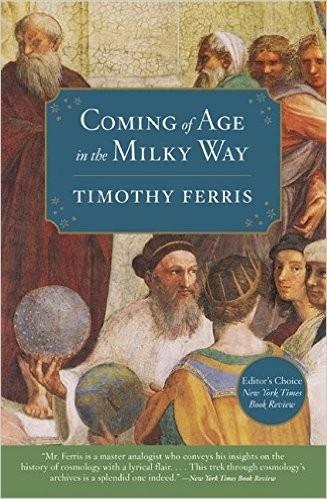
Coming of Age in the Milky Way
by
Timothy Ferris
Published 30 Jun 1988
There’s not the smallest orb which thou behold’st But in his motion like an angel sings, Still quiring to the young-eyed cherubims; Such harmony is in immortal souls, But whilest this muddy vesture of decay Doth grossly close it in, we cannot hear it.26 The churches of the day rang with approximations of the music of the spheres. The plainsongs and chants of the medieval cathedrals were being supplanted by polyphony, the music of many voices that would reach an epiphany in the fugues—the word fugue means “flight”—of Johann Sebastian Bach. For Kepler, polyphony in music was a model for the voices sung by the planets as they spun out their Pythagorean harmonies: “The ratio of plainsong or monody … to polyphony,” he wrote, is the same as the ratio of the consonances which the single planets designate to the consonances of the planets taken together…
…
The intricate etchings of Saturn’s rings, photographed by the Twin Voyager spacecraft in 1980 and 1981, offer a gaudy display of Keplerian harmonies, and the Voyager phonograph record, carried aboard the spacecraft as an artifact of human civilization, includes a set of computer-generated tones representing the relative velocities of the planets—the music of the spheres made audible at last. But the sun of learning is paired with a dark star, and Kepler’s life remained as vexed with tumult as his thoughts were suffused with harmony. His friend David Fabricius was murdered. Smallpox carried by soldiers fighting the Thirty Years’ War killed his favorite son, Friedrich, at age six.
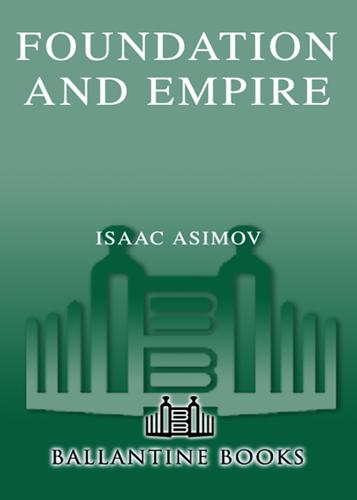
Foundation and Empire
by
Isaac Asimov
Published 31 May 2004
And he nodded slowly, gravely. “That so?” said Devers. “And what did he do?” “Finished the Enclosure, that’s all.” The sergeant chuckled with a fatherly pride. “Isn’t he the corker, though? Didn’t he work it fine? One of the fellows who’s strong on fancy talk says it went as smooth and even as the music of the spheres, whatever they are.” “The big offensive starts now?” asked Barr, mildly. “Hope so,” was the boisterous response. “I want to get back on my ship now that my arm is in one piece again. I’m tired of sitting on my scupper out here.” “So am I,” muttered Devers, suddenly and savagely. There was a bit of underlip caught in his teeth, and he worried it.
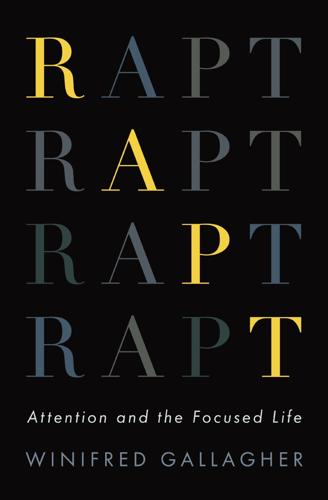
Rapt: Attention and the Focused Life
by
Winifred Gallagher
Published 9 Mar 2009
That’s not to say that cancer was the proverbial “best thing that ever happened to me,” or that I’m glad I had it: it wasn’t, and I’m not. Nor was my focusing strategy 100 percent effective 24/7. There are moments in life—when someone hands you a pink slip, perhaps, or can’t find your “good” chemo vein—when you just can’t immediately shift your attention to what to have for dinner, much less to the music of the spheres. Then too, stimuli that you don’t consciously focus on, such as a scowling face in a crowd or an unpleasant noise, can sometimes sneak into your brain and influence your behavior, albeit weakly. Nevertheless, throughout a long, grueling ordeal, I cleaved to the principle that your life is the creation of what you focus on—and what you don’t.
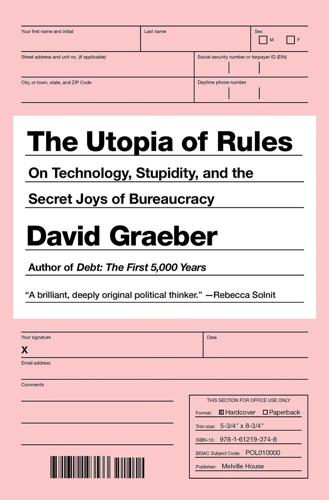
Bureaucracy
by
David Graeber
Published 3 Feb 2015
The first philosophical school to represent themselves as rationalists, and to treat rationality as a value in itself, were the Pythagoreans, who were simultaneously a philosophical and scientific school, and a kind of political cult or confraternity that managed, at one point or another, to take control of several Italian cities.135 Their great intellectual discovery was that there was a formal similarity between the kind of mathematical ratios that could be observed in geometry, musical intervals, and the movements of the planets. The conclusion they reached was that the universe was, on some ultimate level at least, composed of numbers—a notion now largely remembered for the rather charming concept of the inaudible “music of the spheres.” The cosmos, according to the Pythagoreans, was rational because it was ultimately an expression of the principles of number, pitch, and vibration, and when the human mind (or soul) exercised its powers of reason, it was simply participating in that larger rational order, the cosmic “world soul” that animated all.136 This was the picture of the universe Plato largely adopted in Timaeus, and it had enormous influence.
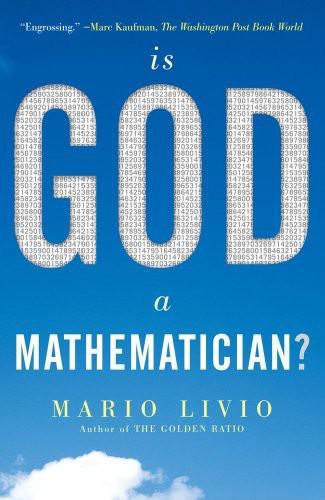
Is God a Mathematician?
by
Mario Livio
Published 6 Jan 2009
Yet this is what Pythagoras would have thought—and Descartes, along with hundreds of other great mathematicians before the nineteenth century. Today mathematics is unbound; it has cast off its chains. Whatever its essence, we recognize it to be as free as the mind, as prehensile as the imagination. Non-Euclidean geometry is proof that mathematics, unlike the music of the spheres, is man’s own handiwork, subject only to the limitations imposed by the laws of thought. So, contrary to the precision and certitude that are the hallmark of statements in mathematics, here we have a divergence of opinions that is more typical of debates in philosophy or politics. Should we be surprised?

Wonderland: How Play Made the Modern World
by
Steven Johnson
Published 15 Nov 2016
The study of musical ratios marked one of the very first moments in the history of knowledge where mathematical descriptions productively explained natural phenomena. In fact, the success of these mathematical explanations of music triggered a two-thousand-year pursuit of similar cosmological ratios in the movements of the sun and planets in the sky—the famous “music of the spheres” that would inspire Kepler and so many others. Wave forms, integer ratios, overtones—none of these concepts were available to our ancestors in the Upper Paleolithic. And yet, for some bizarre reason, they went to great lengths to build tools that could conjure these mathematical patterns out of the simple act of exhaling.

Stealing Fire: How Silicon Valley, the Navy SEALs, and Maverick Scientists Are Revolutionizing the Way We Live and Work
by
Steven Kotler
and
Jamie Wheal
Published 21 Feb 2017
He was tried in absentia for a crime punishable by death—blaspheming the Mysteries. And not just any mysteries; the Eleusinian Mysteries,4 a two-thousand-year-old initiatory ritual that had an outsize impact on Western philosophy and counted some of Greece’s most famous citizens among its elect. Foundational notions like Plato’s world of forms and Pythagoras’s music of the spheres were informed by these rites. “Our Mysteries had a very real meaning,”5 Plato explained, “he that has been purified and initiated [at Eleusis] shall dwell with the gods.” Cicero went further,6 calling the rites the pinnacle of Greek achievement: “Among the many excellent and indeed divine institutions which . . .

The Quantum Thief
by
Hannu Rajaniemi
Published 1 Jan 2010
‘I don’t know where you have been. I don’t know where you are going. But I know you are here to make a choice. Pull the trigger, and you get to be who we were. Do nothing and – well, you will go on with your life, doing smaller things, dreaming smaller dreams. Or you can go back to listening to the music of the spheres, and the musical sound of breaking their laws. I know what I would do if I were you.’ I open the gun and look at the nine bullets. Each has a name on it, holding a quantum state, entangled with the Time in a person’s Watch. Isaac’s. Marcel’s. Gilbertine’s. The others. If I pull the trigger nine times, their Time will run out.

Four Arguments for the Elimination of Television
by
Jerry Mander
Published 1 Jan 1977
Marcuse, Herbert, One Dimensional Man. Boston: Beacon Press, 1964. Meerloo, Joast, "Television Addiction and Reactive Apathy." Journal of Nervous and Mental Disease, Vol. 120 (1954), pp. 290-91. Mulholland, Thomas B., "Training Visual Attention." Aca- demic Therapy, Fall 1974, pp. 5-17. Murchie, Guy, Music of the Spheres. New York: Dover, 1961. The Network Project, Notebook, Vols. I-VII. 101 Earl Hal1, Columbia University, New York, 1973. 367 BIBLIOGRAPHY "New Insights Into Buying Explored," Investments in To- morrow, No. 16. Menlo Park, Ca1.: Stanford Research Institute, Summer 1975. Niehardt, John G., Black Elk Speaks.
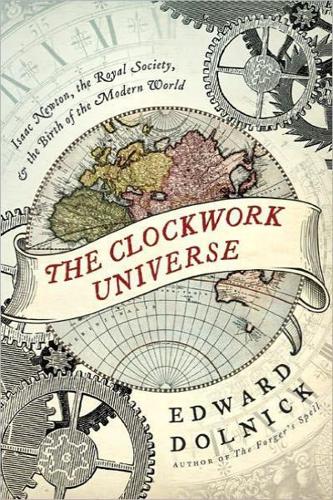
The Clockwork Universe: Saac Newto, Royal Society, and the Birth of the Modern WorldI
by
Edward Dolnick
Published 8 Feb 2011
Lowell Blair (New York: Bantam, 1959), p. 5. 128 “Some kinds of beasts”: Michael White, Isaac Newton, p. 149. 128 The world contained wood: Thomas, Man and the Natural World, p. 20. 128 Even if someone had conceived: Steve Jones, Darwin’s Ghost (New York: Random House, 2000), p. 194. 128 “a thought of God”: David Dobbs, Reef Madness: Charles Darwin, Alexander Agassiz, and the Meaning of Coral (New York: Pantheon, 2005), p. 3. CHAPTER 21. “SHUDDERING BEFORE THE BEAUTIFUL” 129 “all things are numbers”: Kline, Mathematics: The Loss of Certainty, p. 12. 129fn As one of Pythagoras’s followers: Jamie James, The Music of the Spheres (New York: Springer, 1995), p. 35. 130 “one of the truly momentous”: Chandrasekhar, “Shakespeare, Newton, and Beethoven.” 130 St. Augustine explained: Barrow, Pi in the Sky, p. 256. 131 “the first scientific proof”: Kline, Mathematics: The Loss of Certainty, p. 66. 132 “You must have felt this, too”: Chandrasekhar, “Shakespeare, Newton, and Beethoven.” 133 “shuddering before the beautiful”: Ibid. 133 “the years of searching”: From a 1933 lecture by Einstein, “About the Origins of General Relativity,” at Glasgow University.
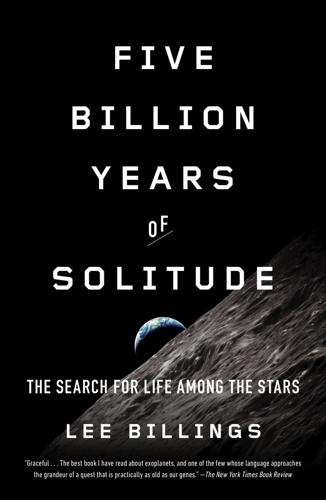
Five Billion Years of Solitude: The Search for Life Among the Stars
by
Lee Billings
Published 2 Oct 2013
In multiplanet systems, however, each world imparts its own subtle distinct pull to the star, creating a more complicated pattern of wobbles. Teasing apart the system’s architecture from those wobbles was rather like determining the layout and composition of an entire orchestra as each of its instruments played different notes all at once. If a planet hunter was too focused on a handful of isolated sweet tones in the music of the spheres, he or she could miss other planets hiding in the sour notes and residual noise. The smaller the world, the weaker its signal, and the more astronomers would strain to detect its presence in washes of stellar static. Laughlin had guided the development of a piece of software, the Systemic Console, that could discern planetary signals out of such complicated data sets.

Pashazade
by
Jon Courtenay Grimwood
Published 1 Jan 2001
Bats echo-located around him through the warm night air, taking moths in mid-flight, each curving strike almost surgical in its precision. Their echo bounced off shutters, refracted from high walls or vanished through open windows to return milliseconds later. Cold and mysterious, like some distant music of the spheres. There was a tom cat lurking in the dirt of the alley floor far below, its heavy shoulders hunched and thick muscles locked in anticipation as it walked, oblivious, round Raf's discarded jellaba and shades, tracking whatever vermin hid behind the rubble. If the cat was dimly aware of the spiralling almost-mice, it didn't allow them to put it off the prey within reach.
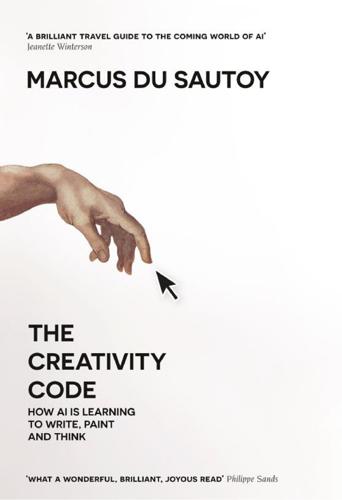
The Creativity Code: How AI Is Learning to Write, Paint and Think
by
Marcus Du Sautoy
Published 7 Mar 2019
It had pushed into new territory. Like new music, the computer had generated new theorems. Yet I must admit I left the DeepMind offices rather downcast. I should have been elated by such a surge in mathematical progress, but what I had seen was like a mindless machine cranking out mathematical muzak, not the music of the spheres that gets me excited. There was no judgement being made about the value of these new discoveries, no interest in whether any of them contained surprising revelations. They were just new. They seemed to be missing two-thirds of what makes a creative act. A mathematical Turing Test Was this really the future?
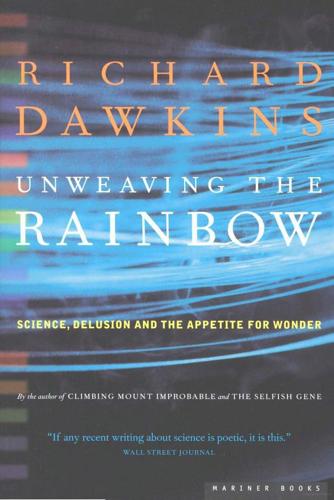
Unweaving the Rainbow
by
Richard Dawkins
Published 7 Aug 2011
But I vigorously challenge anyone to maintain the criticism after reading The Selfish Gene itself, as opposed to just the title.) To apply 'evolving' to the universe is defensible but, as we shall see, it is probably best not to do so. 'Musical' is presumably an allusion to the Pythagorean 'music of the spheres', a piece of poetic science which may not have been bad originally but which we should have grown out of by now. 'Nurturing' has the smell of one of the most deplorable schools of bad poetic science, inspired by a misguided variant of feminism. Here's another example. A number of scientists were invited by an anthologist in 1997 to send in the one question that they most wanted to see answered.
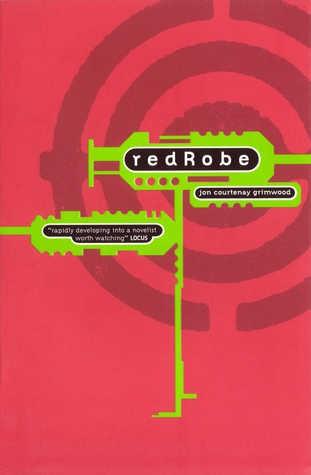
Redrobe
by
Jon Courtenay Grimwood
Published 1 Jan 2000
Above Father Sylvester the sky was dark and starless. A black arc of nothing that stretched across the heavens like void. No people could have looked up at that night sky and imagined it held eternal mementoes of ancient heroes. No angels hung silent and unseen overhead listening to the celestial music of the spheres. It was an absence made absolute. No place could be more fitting for him to die. Father Sylvester had spotted the foam-flecked foss, the thin fall of water, on his ride up to Escondido and though he couldn’t see where it fell to earth, he’d guessed rightly that there’d be a mountain pool.

Some Remarks
by
Neal Stephenson
Published 6 Aug 2012
At the Museum of Submarine Telegraphy in Porthcurno, Cornwall (which we’ll visit later), is a graph of the so-called Earth current measured in a cable that ran from there to Harbor Grace, Newfoundland, decades ago. Over a period of some 72 hours, the graph showed a variation in the range of 100 volts. Unfortunately, the amplitude of the telegraph signal was only 70 volts. So the weak, smeared-out pulses making their way down the cable would have been almost impossible to hear above the music of the spheres. Finally, leakage in the cable’s primitive insulation was inevitable. All of these influences, added together, meant that early telegraphers could send anything they wanted into the big wire, but the only thing that showed up at the other end was noise. These problems were known, but poorly understood, in the mid-1850s when the first transatlantic cable was being planned.
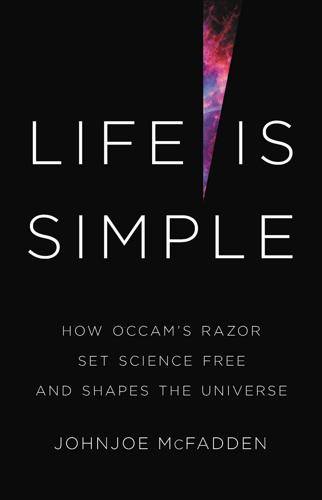
Life Is Simple: How Occam's Razor Set Science Free and Shapes the Universe
by
Johnjoe McFadden
Published 27 Sep 2021
Pythagoras (c.570–c.495 BCE), who was born on the island of Samos, claimed that the rotation of the spheres created a heavenly music audible only to highly tuned ears. A thousand years after Anaximenes, alchemists were claiming to extract pure quintessence from their potions, while two thousand years after Pythagoras, composers were still writing music of the spheres. Entities may become superfluous but they are often remarkably durable. FIGURE 4: Position of Mars against background stars on consecutive nights. Yet, although crystal spheres worked well for the sun, moon or fixed stars that moved in perfect circles across the sky every day, they hit a major obstacle when attempting to account for the motion of those wandering planets.
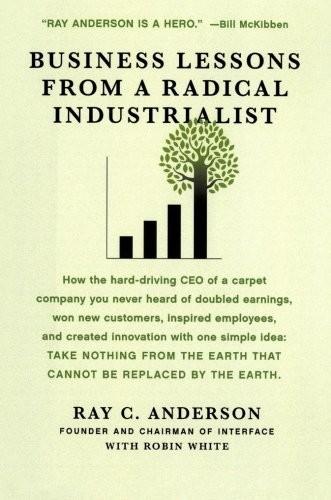
Business Lessons From a Radical Industrialist
by
Ray C. Anderson
Published 28 Mar 2011
For the decimation of western forests in the United States? If we don’t care for people, if we don’t care for the earth, how can we say that we are obeying God’s commandments? In my church, we sing, This is my Father’s world, And to my listening ears All nature sings and ’round me rings The music of the spheres. So here are two important trends. Colleges and universities are raising awareness and sensitivity in their students, changing their own operations to become increasingly sustainable, helping to draw the map to sustainability for all disciplines, and providing the critical research necessary to get the facts—all of them—absolutely straight.
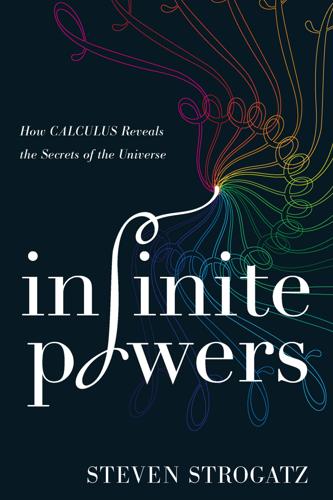
Infinite Powers: How Calculus Reveals the Secrets of the Universe
by
Steven Strogatz
Published 31 Mar 2019
The ancient Greek musicians knew about the melodic concepts of octaves, fourths, and fifths and considered them beautiful. This unexpected link between music (the harmony of this world) and numbers (the harmony of an imagined world) led the Pythagoreans to the mystical belief that all is number. They are said to have believed that even the planets in their orbits made music, the music of the spheres. Ever since then, many of history’s greatest mathematicians and scientists have come down with cases of Pythagorean fever. The astronomer Johannes Kepler had it bad. So did the physicist Paul Dirac. As we’ll see, it drove them to seek, and to dream, and to long for the harmonies of the universe.

The Big Sort: Why the Clustering of Like-Minded America Is Tearing Us Apart
by
Bill Bishop
and
Robert G. Cushing
Published 6 May 2008
For example, some good citizens were spending several Saturdays that November improving the local middle school's feng shui. A rice blessing had already been performed in the principal's office—"Many amazing results are occurring on the campus as a result of these first two hours," the organizer of the project had announced—and on the Saturday after the election, volunteers would hang Music of the Spheres wind chimes in the school's courtyards. When the ballots were counted, I saw that my wonderful Che-remembering, rice-blessing neighborhood voted 45 percentage points more Democratic than Texas as a whole. The 2006 midterm elections were in many ways an extension of 2004—only this time issues intruded.
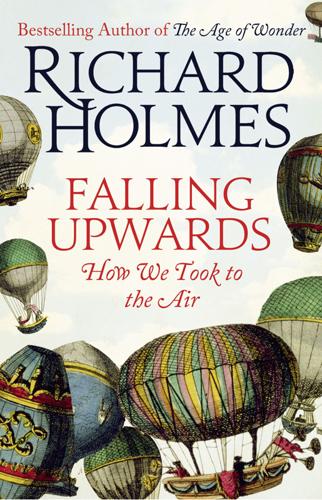
Falling Upwards: How We Took to the Air
by
Richard Holmes
Published 24 Apr 2013
It is a sublime spectacle this – a laboratory of Nature – an irrigating engine. Nothing is formed in vain. And now listen to its music. It is not a roaring, thundering, dashing, tumultuous sound, but a music of sweetest cadence. Like an Aeolian harp it sends up its vibrations. If it is not the music of the spheres, it is at least the rhythmic language of Motion, wherein we perceive that noble proverb illustrated that ‘Order is Heaven’s first Law’.28 Yet Nature’s power, embodied in the west wind, was soon to show itself in quite a different manner to the balloonists. Any complacency was about to be violently swept away.
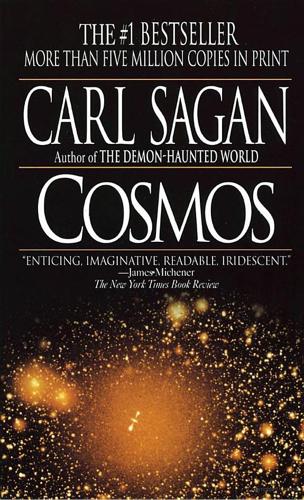
Cosmos
by
Carl Sagan
Published 1 Jan 1980
This model permitted reasonably accurate predictions of planetary motion, certainly good enough for the precision of measurement available in Ptolemy’s day, and even many centuries later. Ptolemy’s aetherial spheres, imagined in medieval times to be made of crystal, are why we still talk about the music of the spheres and a seventh heaven (there was a “heaven,” or sphere for the Moon, Mercury, Venus, the Sun, Mars, Jupiter and Saturn, and one more for the stars). With the Earth the center of the Universe, with creation pivoted about terrestrial events, with the heavens imagined constructed on utterly unearthly principles, there was little motivation for astronomical observations.
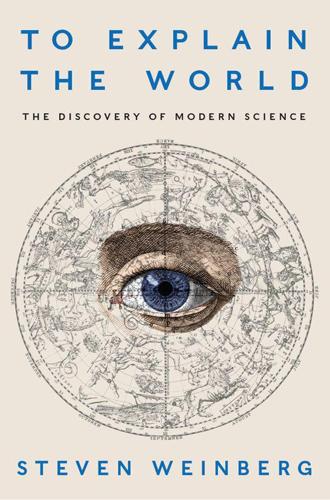
To Explain the World: The Discovery of Modern Science
by
Steven Weinberg
Published 17 Feb 2015
None of this was understood by the Pythagoreans, or indeed by anyone else until the work of the French priest Marin Mersenne in the seventeenth century. Instead, the Pythagoreans according to Aristotle judged “the whole heaven to be a musical scale.”3 This idea had a long afterlife. For instance, Cicero, in On the Republic, tells a story in which the ghost of the great Roman general Scipio Africanus introduces his grandson to the music of the spheres. It was in pure mathematics rather than in physics that the Pythagoreans made the greatest progress. Everyone has heard of the Pythagorean theorem, that the area of a square whose edge is the hypotenuse of a right triangle equals the sum of the areas of the two squares whose edges are the other two sides of the triangle.

Braiding Sweetgrass
by
Robin Wall Kimmerer
I stumbled over two very left feet. “Have you ever wondered how the world got to be put together so beautifully? Why certain plants grow here and not there?” Judging by their polite blankness, this was not a burning question for them. Their total disinterest in ecology pained me. To me ecological insight was the music of the spheres, but to them it was just one more requirement in their premed education. A biological story that wasn’t about humans was of little interest. I didn’t understand how one could be a biologist without being able to see the land, to know natural history and the elegant flow of natural forces. The earth is so richly endowed that the least we can do in return is to pay attention.

Ways of Being: Beyond Human Intelligence
by
James Bridle
Published 6 Apr 2022
It claims language as something distinct and inviolate, the singular property of humankind, both cause and affirmation of its uniqueness. And while it excludes non-human life from its definition, it has its own distinct beauty: in this reading, language is a kind of resonance with a divinely created world, humanity’s version of the music of the spheres. With or without God, language is a song in tune with the world. Pooh-pooh theory finds the origin of language in the sounds made unintentionally by humans: cries and interjections, exclamations of shock, surprise, pain and excitement. Over time, our grunts and cries, coughs, sneezes and other eructations shaped themselves into words to denote their causes, and by extension, other things.
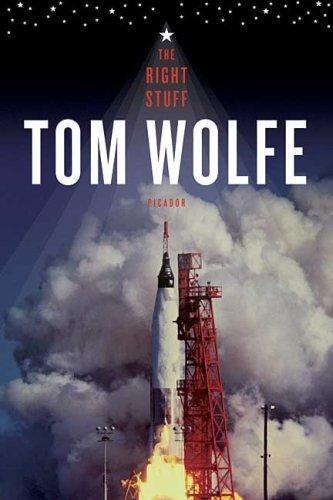
The Right Stuff
by
Tom Wolfe
Published 1 Jan 1979
(No more pilots with non-operational stuff!) Which explained the singular nature of Wally Schirra's flight on October 3. Schirra named his capsule Sigma 7, and there you had it. Scott Carpenter had named his Aurora 7… Aurora… the rosy dawn… the dawn of the intergalactic age… the unknowns, the mystery of the universe… the music of the spheres… Petrarch on the mountain top… and all that. Whereas Sigma… Sigma was a purely engineering symbol. It stood for the summation, the solution of the problem. Unless he had come right out and named the capsule Operational, he couldn't have chosen a better name. For the purpose of Schirra's flight was to prove that Carpenter's need not have happened.
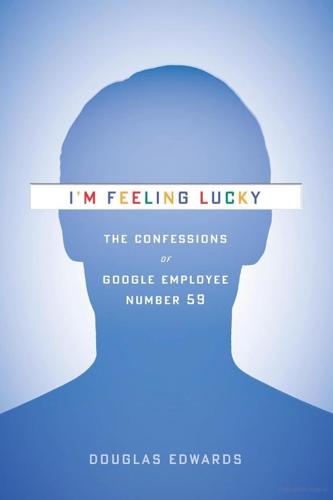
I'm Feeling Lucky: The Confessions of Google Employee Number 59
by
Douglas Edwards
Published 11 Jul 2011
There were a few confused souls who didn't get it at all, and some who felt we should forget comedy and stick to searching, and a handful who threatened to leave if we put graphics on our homepage permanently. One guy who said he was "incipiently epileptic" believed our spinning spiral graphic could induce seizures. But these sour notes were drowned by the chorus of hosannas sounding steadily over the next few hours. It was a love fest of praise and joy and Lo! Was that inaudible rhythm the music of the spheres thrumming softly in the heavens? "Turn it off. It thinks I'm German." The off-key refrain caught my ear. "I found MentalPlex mildly amusing, but the different languages on the results page make it harder to use. The joke gets old very quickly." Discordant voices sang about confusion and annoyance.
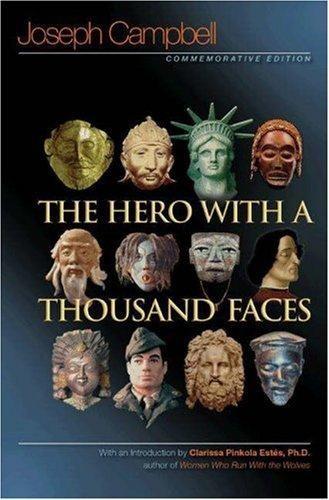
The Hero With a Thousand Faces
by
Joseph Campbell
Published 14 Apr 2004
XV, 165-167; 184-185 (translation by Frank Justus Miller, the Loeb Classical Library). 51 Bhagavad Gita. 2:18 (translation by Swami Nikhilananda, New York, 1944). T H E MUNOMYTH THE HERO AND THE GOD imperishable eternity; time yields to glory; and the world sings with the prodigious, angelic, but perhaps finally monotonous, siren music of the spheres. Like happy families, the myths and the worlds redeemed are all alike. • 3 • The Hero and the God The standard path of the mythological adventure of the hero is a magnification of the formula represented in the rites of passage: separation—initiation—return: which might be named the nuclear unit of the monomyth."
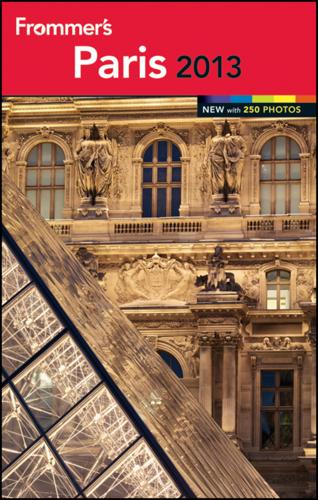
Frommer's Paris 2013
by
Kate van Der Boogert
Published 24 Sep 2012
It’s difficult to single out one panel or window above the others, but an exceptional one is the 12th-century Vierge de la Belle Verrière (Our Lady of the Beautiful Window) on the south side. Of course, there are the three fiery rose windows, but you couldn’t miss those if you tried. Stained-glass windows at the Chartres Cathedral. © Markel Redondo Music of the Spheres If you’re visiting Chartres on a Sunday afternoon in July or August, the cathedral has a free 1-hour organ concert at 4:45pm, when the filtered light of the setting sun makes the western windows come thrillingly alive. Though you might be too transfixed by the heavenly light, don’t neglect to take in the celebrated choir screen; work on it began in the 16th century and lasted until 1714.
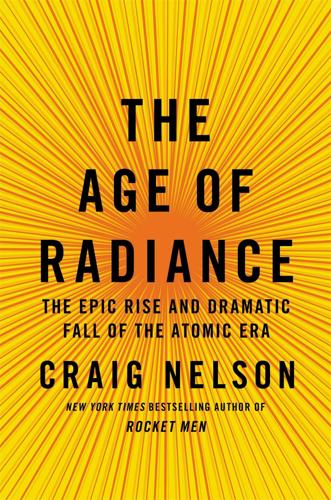
The Age of Radiance: The Epic Rise and Dramatic Fall of the Atomic Era
by
Craig Nelson
Published 25 Mar 2014
If k > 1, uranium’s neutrons will keep splitting nuclei, producing more free-ranging neutrons, and a chain reaction will sustain; if k < 1, it will not. For civilians, that atomic power and thermonuclear bombs are based on k > 1 is Greek . . . but not knowing the mathematics of physics means we are deaf to the real music of the spheres. With the navy-supplied thirty tons of graphite and uranium finally at hand, Fermi had to figure out how to engineer chain-reaction test runs at Schermerhorn Hall. These first experiments included the sprinting technique refined in Rome. Herb Anderson: “Cartons of carefully wrapped graphite bricks began to arrive at the Pupin laboratory until 11/2 tons had come, enough for the experiment. . . .

New York 2140
by
Kim Stanley Robinson
Published 14 Mar 2017
When that rising car had carried her over the water to the tower, she got out and walked across the old bridge with the rest of the well-bundled New Yorkers crossing the river. The river ice just below them was patterned like a jigsaw puzzle, and only broke open to black water past Governors Island. The wind whistled in the cat’s cradle of wires overhead in its aleatoric aeolia, surely the greatest music ever heard—if not the music of the spheres, then surely by definition the music of the cylinders. It was cold waiting in the line for another cable car, this one running from the bridge’s east tower over to Brooklyn Heights. Definitely time to deploy icebreakers and get the vapos back in action, everyone in the line agreed, with their noses white, their lips blue, their teeth chattering.

Drink: A Cultural History of Alcohol
by
Iain Gately
Published 30 Jun 2008
He believes most Russians share the same compulsion to get drunk and reflects on the effect that this has had on their culture: “It’s weird, nobody in Russia knows how Pushkin died, but everybody knows how to distil varnish.” The fruits of such knowledge were genuinely frightening potations, including the narrator’s favorite: Dog’s giblets, the drink that puts all others in the shade! It’s not just a drink, it’s the music of the spheres! What’s the most beautiful thing in life? the struggle to free all mankind. But here’s something even more beautiful—write it down: Let it marinade for a week with some cigar tobacco, then serve. The process of dismantling the Soviet behemoth begun by Gorbachev was finished by his successor, Boris Yeltsin, in 1991.

The Simple Living Guide
by
Janet Luhrs
Published 1 Apr 2014
To meditate this way, concentrate on that point between your eyebrows while you are sitting. Imagine gazing into your spiritual center, and imagine it is surrounded by white light. Listen to the sounds inside you. Much has been written about these “spiritual sounds”; the ancient Greeks referred to them as “music of the spheres.” Sit quietly, focusing on your spiritual eye and on the spiritual sounds. It is thought that these sounds are best heard through the right ear. You can visualize any number of things. Your heart can be a flower slowly opening up, or you can imagine you are at a favorite peaceful destination, such as a beach or mountain cabin.
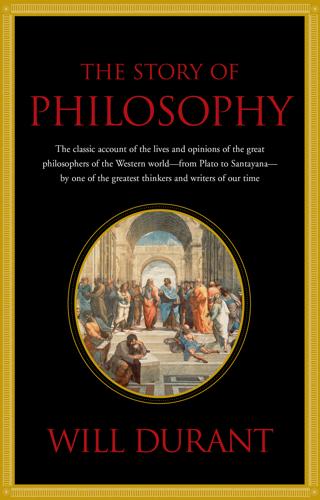
The Story of Philosophy
by
Will Durant
Published 23 Jul 2012
And indeed, great men speak to us only so far as we have ears and souls to hear them; only so far as we have in us the roots, at least, of that which flowers out in them. We too have had the experiences they had, but we did not suck those experiences dry of their secret and subtle meanings: we were not sensitive to the overtones of the reality that hummed about us. Genius hears the overtones, and the music of the spheres; genius knows what Pythagoras meant when he said that philosophy is the highest music. So let us listen to these men, ready to forgive them their passing errors, and eager to learn the lessons which they are so eager to teach. “Do you then be reasonable,” said old Socrates to Crito, “and do not mind whether the teachers of philosophy are good or bad, but think only of Philosophy herself.

Foucault's Pendulum
by
Umberto Eco
Published 15 Dec 1990
Lone suppository, hollow obelisk, Magnificat of wire, apotheosis of the battery, aerial altar of an idolatrous cult, bee in the heart of the rose of the winds, piteous ruin, hideous night-colored colossus, misshapen emblem of useless strength, absurd wonder, meaningless pyramid, guitar, inkwell, telescope, prolix as a cabinet minister’s speech, ancient god, modern beast...It was all this and more. And, had I had the sixth sense of the Masters of the World, now that I stood within its bundle of vocal cords encrusted with rivet polyps, I would have heard the Tower hoarsely whisper the music of the spheres as it sucked waves from the heart of our hollow planet and transmitted them to all the menhirs of the world. Rhizome of junctures, cervical arthrosis, prothesis of protheses. The horror of it! To dash my brains out, from where I was, They would have to launch me toward the peak. Surely I was coming out of a journey through the center of the earth, I was dizzy, antigrav-itational, in the antipodes.
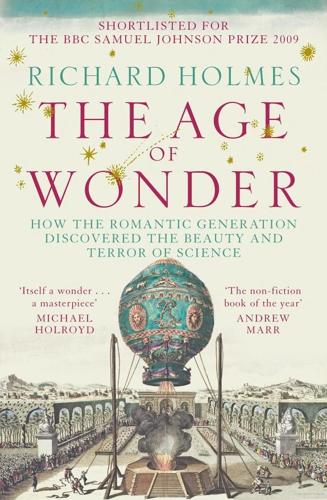
The Age of Wonder
by
Richard Holmes
Published 15 Jan 2008
The rapid, complex orchestration around the solo oboe in the concertos is handled with great confidence, and suggests Herschel’s ability to manage patterns and counterpoint. This was a conceptual skill which he seemed to transfer (visually) to the patterning of stars and constellations. He moved from earthly music to the music of the spheres. ♣ A typical brass eighteenth-century orrery showed the sequence of six known planets: Mercury, Venus, Earth, Mars, Jupiter (with moons) and Saturn (with rings) orbiting around a central sun (sometimes operated by clockwork and illuminated by candles). Flamsteed showed all constellations-such as Herschel’s early favourites Orion, Andromeda and Taurus-against mythological engravings of their signs: the Hunter, the Goddess, the Bull.
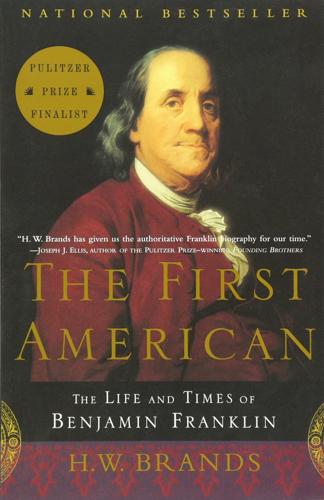
The First American: The Life and Times of Benjamin Franklin
by
H. W. Brands
Published 1 Jan 2000
Leeds then attempted to brush away this pesky fly: “I shall say little more about him than, as a friend, to advise he will never take upon him to predict or ascribe any person’s death till he has learned to do it better than he did before.” Franklin refused to let Leeds off so easily. “Whatever may be the music of the spheres, how great soever the harmony of the stars, ’tis certain there is no harmony among the stargazers; but they are perpetually growling and snarling at one another like strange curs, or like some men at their wives.” Of course, it was Franklin who had upset the harmony of the stargazers by trying to break into the almanac market, yet the device of Saunders allowed him to massage the truth with impunity and imagination: I had resolved to keep the peace on my own part, and affront none of them; and I shall persist in that resolution.
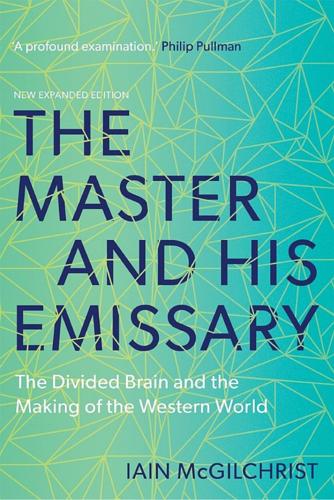
The Master and His Emissary: The Divided Brain and the Making of the Western World
by
Iain McGilchrist
Published 8 Oct 2012
The left hemisphere, by contrast, has precision, but it has no intuitive sense of what it is actually doing, other than following rules and manipulating symbols.327 If one acquires a computational skill leading to a precise answer, it will be most evident in the language in which it was acquired: there is no such language effect in relation to inexact estimation, the intuitive sense of size.328 It is worth considering that numbers can either signify absolutes – a quantifiable amount, as in statistics – which would suggest an affinity with the left hemisphere, or signify relations, which would suggest an affinity with the right hemisphere. For Pythagoras, it was this regularity of proportion or relationship, rather than number in any absolute sense, that underpinned music and beauty – the music of the spheres, the natural harmony of the universe. THE TWIN BODIES Emotion is inseparable from the body in which it is felt, and emotion is also the basis for our engagement with the world. Social understanding in the sense of empathic connection, as well as understanding how others feel, what they mean not only by what they say in context, as we have seen, but by their facial expressions, their ‘body language’ and tone of voice – all this is made possible by the right hemisphere.

Europe: A History
by
Norman Davies
Published 1 Jan 1996
But it was Pythagoras of Samos (c.572–497) who, in addition to compiling the results of his predecessors, made a number of original advances. He launched the Theory of Numbers, formulated the theorem about the square of the hypotenuse of the right-angle triangle, and, most interestingly, worked out the mathematical basis of musical harmony. He may be the author of the beautiful but mistaken theory of ‘the music of the spheres’. Eudoxus discovered the Theory of Proportions, and the method of exhaustion for measuring curvilinear surfaces. His disciple, Menaechmus, discovered conic sections. All these researches prepared the way for Euclides of Alexandria (fl. c.300), whose Elements is said to have reigned supreme for longer than any book save the Bible.
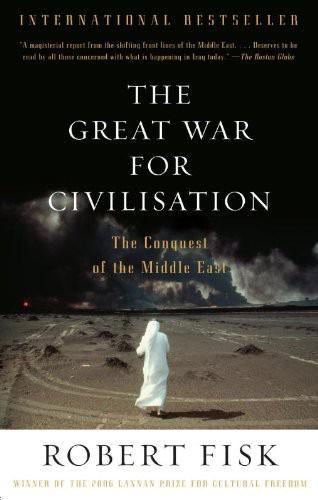
The Great War for Civilisation: The Conquest of the Middle East
by
Robert Fisk
Published 2 Jan 2005
A dozen, a hundred Allahu akbars, uncoordinated, overlaying each other, building upon a foundation of identical words, high-pitched and tenor, treble and child-like, an army of voices shouting from the rooftops of Kandahar. They swelled in volume, a thousand now, ten thousand, a choir that filled the heavens, that floated beneath the white moon and the stars, the music of the spheres. I saw a family, a husband and wife and a clutch of children, all chanting, but their voices were lost in the pulse of sound that now covered the city. This extraordinary phenomenon was no mere protest, a lament at the loss of freedom. When the Prophet entered Mecca in the year 630 of the Christian era, he walked to the great black stone, the Kaaba, touched it with his stick and shouted in a strong voice that supreme invocation of Islam.